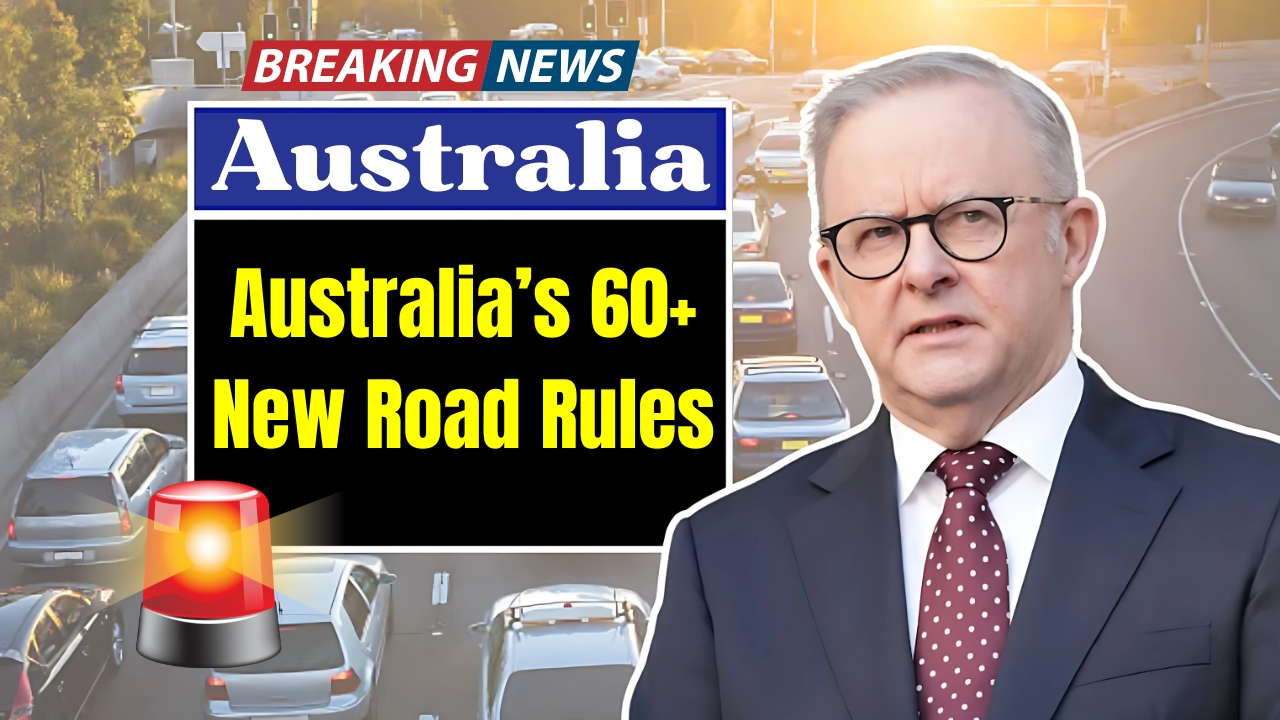Australia’s Roadway Revolution: 60+ Game-Changing Driving New Road Rules Laws Arriving August 2025
Australia is gearing up for its biggest traffic-rule shake-up in generations, with more than 60 fresh driving laws rolling in nationwide by August 2025. The shake-up aims to crank up road safety, dial down deaths, and bring one tidy traffic rulebook to every state and territory, coast to coast.
Senior Drivers: Fresh Rules to Keep Independence Safe
The new laws will change how older Aussies get behind the wheel, letting them keep their freedom while protecting everyone else on the road. From 2025, drivers aged 60 and older will face a regular check-up clock that ticks every one to three years, depending on where they live. The check-ups will look at vision sharpness, general health, reaction speed, and brainpower to catch creeping age-related problems before they create driving surprises.
Once you hit 70, you can’t skate by with the usual license renewal anymore. A full health check is now the rule, covering brainpower, muscle strength, and whether you can still park without a grand opera. If you still qualify, you might end up with a conditional license, saying something like “no driving after sunset” or “leave farewell statements for winding country roads only.” Don’t panic—a built-in grace period gives you a breather to finish the forms and tests, with the countdown timer pegged to August 31, 2025. Miss that, and the license you have could become a museum relic.
Forget the daydream of a police cruiser signaling you to the shoulder—traffic enforcement is turning into a robot arm of the law. Overhead, AI cameras are now our neighborhood watch that never blinks. They can spot the instant your thumb brushes a big red Twitter icon, and the alert is logged before your message is. Reckless home-workout versions of your grocery list won’t skip detection either. Left the seatbelt off? The same drone-skinned camera sends you a ticket before the seat fabric settles back down.
Turn the engine off, and the cameras don’t either. They still treat your jammed-on brake-light as breaking the rules all thanks to the license-plate DNA they remember. The law’s new motto is as plain as a headline—you touch, you pay. No exceptions, no sympathy, and absolutely none for hands-on antics that happen when the light’s technically red. Whether you think you’re in a safe history neighborhood or a lonely bush track, our roads now wear cameras like the neighborhood’s grandma wears spectacles—thick, everywhere, and never missing the smallest detail.
Safer Roads, Safer Speeds
Every Australian state has started tweaking speed rules in ways designed to keep everyone safer, especially in emergencies. In Victoria, drivers must slow to 40 km/h whenever they pass emergency vehicles with their visual signals on. South Australia goes a step further, requiring a maximum of 25 km/h in the same situation, and the still-working roadside assist vehicles get the same treatment. New South Wales keeps the catch-all 40 km/h rule for the same vehicles.
Meanwhile, Western Australia has carried out an extensive speed zone rethink. They’ve slapped 60 km/h limits on 1,800 lower-tier roads and moved the speed in busy pedestrian areas from 50 to 60 km/h straight down to 40 km/h. It’s all about giving joggers, kids, and the world’s slowest cartoon animals a safer chance.
Smart P-plate Adjustments
In New South Wales a 2025 trial will let drivers on P-plates who are two-plus-five bless-‘em with their trusty 25 along route maps in a mounted phone holder. If the trial convinces the state a hands- on, voice- with- route good plan outweighs the customary no-phone rule, everyone might see a safer surprise. Back in WA the new red P-plate crowd now faces a strict “one passenger, maximum, except for relatives and ride for work” rule. Slip up and the ticket’s a $200 not- quite 200-word reminder, plus the oh-so-paisley two ticket cream on the emotional scorecard.
State-Specific Innovations
Queensland drivers keep enjoying a 20% discount on registration costs, but don’t forget that a 3.5% bump in traffic fines hits in July. New South Wales is scrapping ticketless parking and hitting anyone trading demerit points with fines that can top $22,000. In Victoria, lawmakers are thinking about lowering the provisional license age to 17, plus flood high schools with extra driving education. South Australia is cracking down on anyone caught driving drunk with a kid in the car—jail time is on the table—while also easing e-scooter rules so younger riders can roll safer.
Environmental Standards Advance
Australia is dutifully cleaning up its air, and the proof is the rollout of Euro 6d rules. New passenger vehicles, Utes, and four-wheel drives will have to cut nitrogen oxides and tiny particles by a big margin. It’s the latest step in our promise to keep the atmosphere of this wide, beautiful country a little cleaner.
The shift in our driving laws mirrors the country we’re becoming—working to keep us safe, be tech-smart, and still green. So whether you’re double-checking those fast-approaching service numbers or thinking about jumping on the neighbor’s road-safety group, these laws are a reminder that every time we turn the key in the ignition here, we’re sharing the drive toward one big, shared Australian future on all the long and winding roads of this continent.
Australia’s roadmap is adding 60-something changes you really need to know before the wheels hit the road. By August 2025 the rules get weighty: tests for senior drivers, AI watches, tighter phone fines, speed-limit trims, and tweaks to P-plate licenses, among others. Don’t get tangled—swipe, save, and read the whole story before the next ride.
Youth Allowance Australia 2025 Full Guide to Eligibility, Rates and How to Apply

